Shiro框架:Shiro登录认证流程源码解析
目录
1.用户登录认证流程
1.1 生成认证Token
1.2 用户登录认证
1.2.1 SecurityManager login流程解析
1.2.1.1 authenticate方法进行登录认证
1.2.1.1.1 单Realm认证
1.2.1.2 认证通过后创建登录用户对象
1.2.1.2.1 复制SubjectContext
1.2.1.2.2 对subjectContext设置securityManager
1.2.1.2.3 对subjectContext设置session
1.2.1.2.4 对subjectContext设置Principals
1.2.1.2.5 根据subjectContext创建Subject
1.2.1.2.6 保存Subject
Shiro作为一款比较流行的登录认证、访问控制安全框架,被广泛应用在程序员社区;Shiro登录验证、访问控制、Session管理等流程内部都是委托给SecurityManager安全管理器来完成的,SecurityManager安全管理器上篇文章已经进行了详细解析,详见:Shiro框架:Shiro SecurityManager安全管理器解析-CSDN博客,在此基础上,本篇文章继续对Shiro关联链路处理流程之一---登录认证流程 进行解析;
想要深入了解Shiro框架整体原理,可移步:
Shiro框架:ShiroFilterFactoryBean过滤器源码解析-CSDN博客、
Shiro框架:Shiro内置过滤器源码解析-CSDN博客
1.用户登录认证流程
在Shiro框架:Shiro内置过滤器源码解析-CSDN博客内置过滤器分析中,我们知道用户执行登录的认证操作是在过滤器FormAuthenticationFilter中执行的,如下:
protected boolean onAccessDenied(ServletRequest request, ServletResponse response) throws Exception {if (isLoginRequest(request, response)) {if (isLoginSubmission(request, response)) {if (log.isTraceEnabled()) {log.trace("Login submission detected. Attempting to execute login.");}return executeLogin(request, response);} else {if (log.isTraceEnabled()) {log.trace("Login page view.");}//allow them to see the login page ;)return true;}} else {if (log.isTraceEnabled()) {log.trace("Attempting to access a path which requires authentication. Forwarding to the " +"Authentication url [" + getLoginUrl() + "]");}saveRequestAndRedirectToLogin(request, response);return false;}}
登录认证操作是在executeLogin方法中完成的:
protected boolean executeLogin(ServletRequest request, ServletResponse response) throws Exception {AuthenticationToken token = createToken(request, response);if (token == null) {String msg = "createToken method implementation returned null. A valid non-null AuthenticationToken " +"must be created in order to execute a login attempt.";throw new IllegalStateException(msg);}try {Subject subject = getSubject(request, response);subject.login(token);return onLoginSuccess(token, subject, request, response);} catch (AuthenticationException e) {return onLoginFailure(token, e, request, response);}}上述源码的执行过程表示为时序图会更直观,时序图如下:
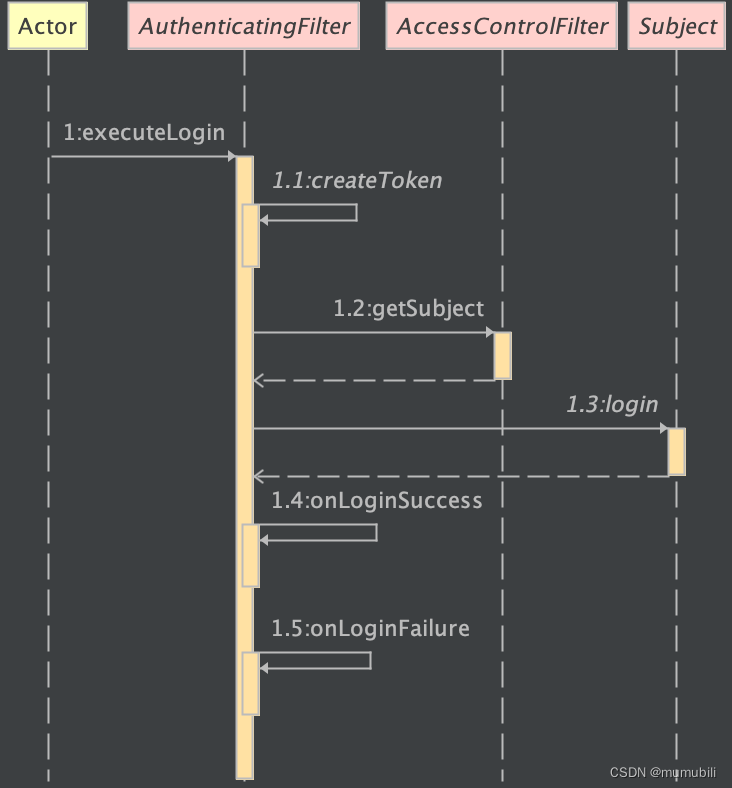
该认证过程主要包含以下几个部分:
- 根据用户名密码等生成认证Token
- 获取当前登录用户Subject
- 调用Subject的login方法进行登录认证
- 其它的登录成功、或登录失败的拦截方法
下面主要对生成认证Token和用户登录认证实现进行详细说明;
1.1 生成认证Token
createToken的实现在FormAuthenticationFilter内,如下:
这里用户名和密码是通过request请求对象获取的:
protected AuthenticationToken createToken(ServletRequest request, ServletResponse response) {String username = getUsername(request);String password = getPassword(request);return createToken(username, password, request, response);}在父类AuthenticatingFilter中进一步实现如下,这里构造了UsernamePasswordToken类,表示采用用户名密码的认证方式;
protected AuthenticationToken createToken(String username, String password,ServletRequest request, ServletResponse response) {boolean rememberMe = isRememberMe(request);String host = getHost(request);return createToken(username, password, rememberMe, host);}protected AuthenticationToken createToken(String username, String password,boolean rememberMe, String host) {return new UsernamePasswordToken(username, password, rememberMe, host);}图示UsernamePasswordToken的继承结构:
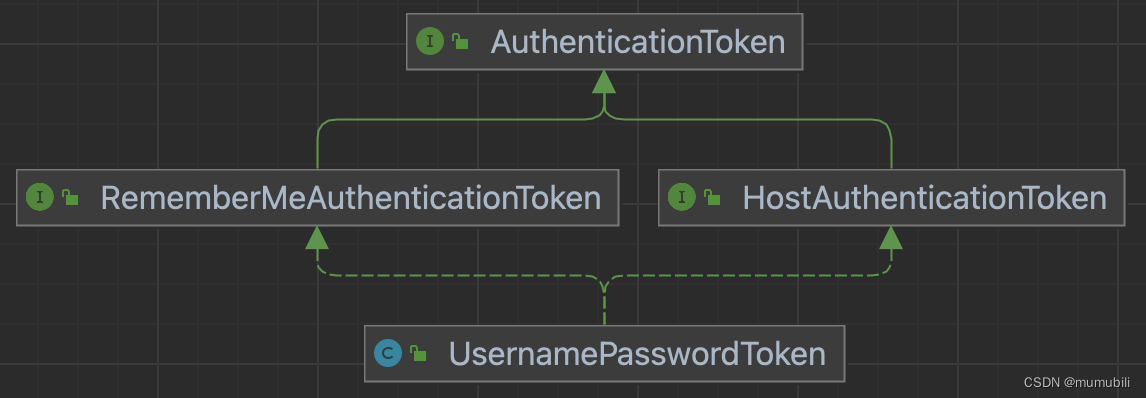
1.2 用户登录认证
在Subject的login的具体实现如下:
- 实际的login是委托给SecurityManager完成的
- 登录成功后设置当前登录对象为认证成功
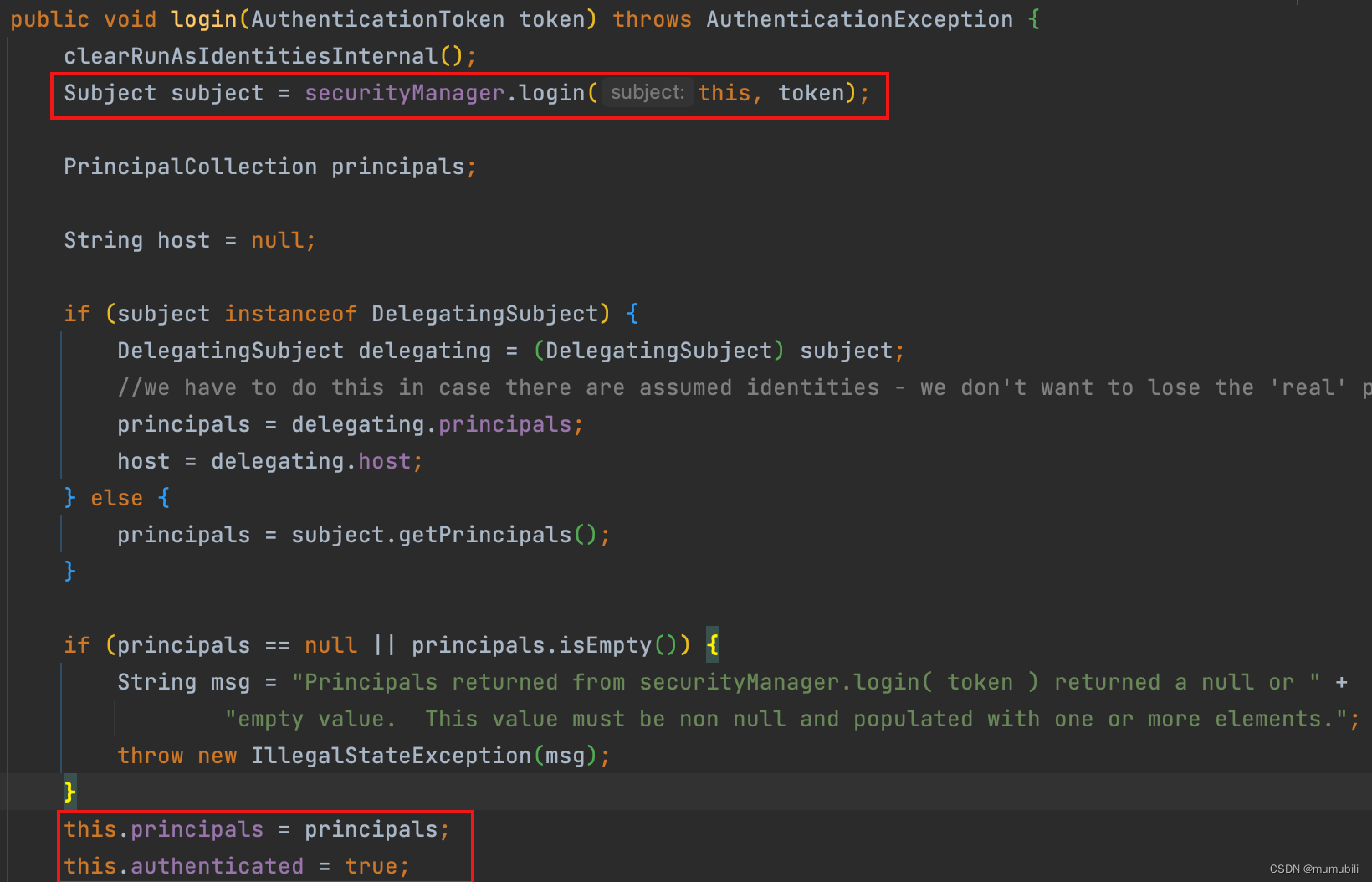
下面主要对SecurityManager的login方法进行具体分析;
1.2.1 SecurityManager login流程解析
login方法具体实现如下:
public Subject login(Subject subject, AuthenticationToken token) throws AuthenticationException {AuthenticationInfo info;try {info = authenticate(token);} catch (AuthenticationException ae) {try {onFailedLogin(token, ae, subject);} catch (Exception e) {if (log.isInfoEnabled()) {log.info("onFailedLogin method threw an " +"exception. Logging and propagating original AuthenticationException.", e);}}throw ae; //propagate}Subject loggedIn = createSubject(token, info, subject);onSuccessfulLogin(token, info, loggedIn);return loggedIn;}上述登录流程主要包含2部分内容:
- 通过authenticate方法进行登录认证
- 认证通过后创建登录用户对象
下面分别进行展开分析;
1.2.1.1 authenticate方法进行登录认证
具体的authenticate实现内部又委托给了认证器Authenticator来实现,具体的认证器为ModularRealmAuthenticator,其继承结构如下:
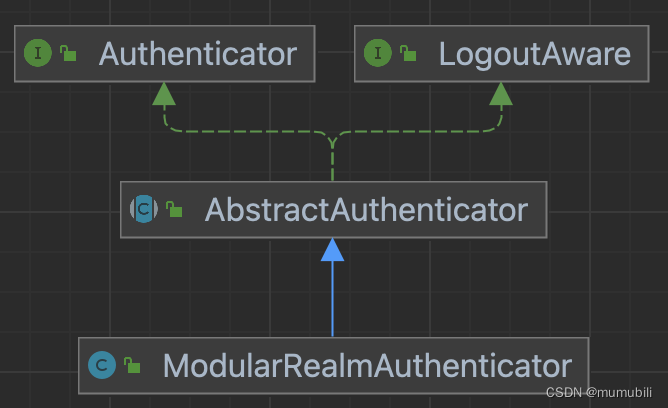
authenticate方法具体实现是在父类AbstractAuthenticator中,如下:
public final AuthenticationInfo authenticate(AuthenticationToken token) throws AuthenticationException {if (token == null) {throw new IllegalArgumentException("Method argument (authentication token) cannot be null.");}log.trace("Authentication attempt received for token [{}]", token);AuthenticationInfo info;try {info = doAuthenticate(token);if (info == null) {String msg = "No account information found for authentication token [" + token + "] by this " +"Authenticator instance. Please check that it is configured correctly.";throw new AuthenticationException(msg);}} catch (Throwable t) {AuthenticationException ae = null;if (t instanceof AuthenticationException) {ae = (AuthenticationException) t;}if (ae == null) {//Exception thrown was not an expected AuthenticationException. Therefore it is probably a little more//severe or unexpected. So, wrap in an AuthenticationException, log to warn, and propagate:String msg = "Authentication failed for token submission [" + token + "]. Possible unexpected " +"error? (Typical or expected login exceptions should extend from AuthenticationException).";ae = new AuthenticationException(msg, t);if (log.isWarnEnabled())log.warn(msg, t);}try {notifyFailure(token, ae);} catch (Throwable t2) {if (log.isWarnEnabled()) {String msg = "Unable to send notification for failed authentication attempt - listener error?. " +"Please check your AuthenticationListener implementation(s). Logging sending exception " +"and propagating original AuthenticationException instead...";log.warn(msg, t2);}}throw ae;}log.debug("Authentication successful for token [{}]. Returned account [{}]", token, info);notifySuccess(token, info);return info;}通过方法doAuthenticate对认证Token进行认证,通过notifySuccess、notifyFailure监听认证通过或失败的事件并调用注册的监听器;
方法doAuthenticate的具体实现是在子类完成的,如下:
protected AuthenticationInfo doAuthenticate(AuthenticationToken authenticationToken) throws AuthenticationException {assertRealmsConfigured();Collection<Realm> realms = getRealms();if (realms.size() == 1) {return doSingleRealmAuthentication(realms.iterator().next(), authenticationToken);} else {return doMultiRealmAuthentication(realms, authenticationToken);}}这里首先获取已注册的安全组件Realm,其注册过程是在RealmSecurityManager初始化的过程中完成的(对SecurityManager安全管理器的处理过程感兴趣可以参见:Shiro框架:Shiro SecurityManager安全管理器解析-CSDN博客)
然后根据Realm的个数分别执行单Realm认证或多Realm认证,这里已单Realm认证为例进行说明,多Realm认证类似;
1.2.1.1.1 单Realm认证
通过doSingleRealmAuthentication方法完成单Realm认证,实现如下:
protected AuthenticationInfo doSingleRealmAuthentication(Realm realm, AuthenticationToken token) {if (!realm.supports(token)) {String msg = "Realm [" + realm + "] does not support authentication token [" +token + "]. Please ensure that the appropriate Realm implementation is " +"configured correctly or that the realm accepts AuthenticationTokens of this type.";throw new UnsupportedTokenException(msg);}AuthenticationInfo info = realm.getAuthenticationInfo(token);if (info == null) {String msg = "Realm [" + realm + "] was unable to find account data for the " +"submitted AuthenticationToken [" + token + "].";throw new UnknownAccountException(msg);}return info;}这里Reaml接口包含一整套的继承层次实现,如下,这里不过多展开解析;

getAuthenticationInfo是在AuthenticatingRealm中完成的,如下:
public final AuthenticationInfo getAuthenticationInfo(AuthenticationToken token) throws AuthenticationException {AuthenticationInfo info = getCachedAuthenticationInfo(token);if (info == null) {//otherwise not cached, perform the lookup:info = doGetAuthenticationInfo(token);log.debug("Looked up AuthenticationInfo [{}] from doGetAuthenticationInfo", info);if (token != null && info != null) {cacheAuthenticationInfoIfPossible(token, info);}} else {log.debug("Using cached authentication info [{}] to perform credentials matching.", info);}if (info != null) {assertCredentialsMatch(token, info);} else {log.debug("No AuthenticationInfo found for submitted AuthenticationToken [{}]. Returning null.", token);}return info;}这里首先获取AuthenticationInfo对象,要么从缓存中获取,要么通过引入的抽象方法doGetAuthenticationInfo获取(交由应用层子类具体实现);
获取到AuthenticationInfo后,将其余用户录入的登录Token进行比对,这部分具体是方法assertCredentialsMatch完成的,具体如下:
protected void assertCredentialsMatch(AuthenticationToken token, AuthenticationInfo info) throws AuthenticationException {CredentialsMatcher cm = getCredentialsMatcher();if (cm != null) {if (!cm.doCredentialsMatch(token, info)) {//not successful - throw an exception to indicate this:String msg = "Submitted credentials for token [" + token + "] did not match the expected credentials.";throw new IncorrectCredentialsException(msg);}} else {throw new AuthenticationException("A CredentialsMatcher must be configured in order to verify " +"credentials during authentication. If you do not wish for credentials to be examined, you " +"can configure an " + AllowAllCredentialsMatcher.class.getName() + " instance.");}}这里获取了默认的匹配器SimpleCredentialsMatcher,并调用doCredentialsMatch方法进行匹配,匹配实现如下:
public boolean doCredentialsMatch(AuthenticationToken token, AuthenticationInfo info) {Object tokenCredentials = getCredentials(token);Object accountCredentials = getCredentials(info);return equals(tokenCredentials, accountCredentials);}首先获取Credentials,也即用户密码,然后调用equals方法进行匹配,如下通过字节流的方式进行比对(主要是为了安全考虑,系统处理时采用非明文形式)。
protected boolean equals(Object tokenCredentials, Object accountCredentials) {if (log.isDebugEnabled()) {log.debug("Performing credentials equality check for tokenCredentials of type [" +tokenCredentials.getClass().getName() + " and accountCredentials of type [" +accountCredentials.getClass().getName() + "]");}if (isByteSource(tokenCredentials) && isByteSource(accountCredentials)) {if (log.isDebugEnabled()) {log.debug("Both credentials arguments can be easily converted to byte arrays. Performing " +"array equals comparison");}byte[] tokenBytes = toBytes(tokenCredentials);byte[] accountBytes = toBytes(accountCredentials);return MessageDigest.isEqual(tokenBytes, accountBytes);} else {return accountCredentials.equals(tokenCredentials);}}至此,用户账号密码匹配完成,匹配完成后,会重新创建用户登录对象,并更新用户状态等,下面具体分析;
1.2.1.2 认证通过后创建登录用户对象
认证通过后创建Subject的实现如下:
protected Subject createSubject(AuthenticationToken token, AuthenticationInfo info, Subject existing) {SubjectContext context = createSubjectContext();context.setAuthenticated(true);context.setAuthenticationToken(token);context.setAuthenticationInfo(info);if (existing != null) {context.setSubject(existing);}return createSubject(context);}@Overrideprotected SubjectContext createSubjectContext() {return new DefaultWebSubjectContext();}这里创建了DefaultWebSubjectContext,用户Subject创建,其中设置了认证状态、认证Token、已认证信息,然后调用createSubject方法继续进行构造,如下:
public Subject createSubject(SubjectContext subjectContext) {//create a copy so we don't modify the argument's backing map:SubjectContext context = copy(subjectContext);//ensure that the context has a SecurityManager instance, and if not, add one:context = ensureSecurityManager(context);//Resolve an associated Session (usually based on a referenced session ID), and place it in the context before//sending to the SubjectFactory. The SubjectFactory should not need to know how to acquire sessions as the//process is often environment specific - better to shield the SF from these details:context = resolveSession(context);//Similarly, the SubjectFactory should not require any concept of RememberMe - translate that here first//if possible before handing off to the SubjectFactory:context = resolvePrincipals(context);Subject subject = doCreateSubject(context);//save this subject for future reference if necessary://(this is needed here in case rememberMe principals were resolved and they need to be stored in the//session, so we don't constantly rehydrate the rememberMe PrincipalCollection on every operation).//Added in 1.2:save(subject);return subject;}如上创建过程包含了以下几部分,分别进行分析;
1.2.1.2.1 复制SubjectContext
对subjectContext调用复制构造方法进行复制,subjectContext底层通过backingMap保存上下文信息:
public MapContext(Map<String, Object> map) {this();if (!CollectionUtils.isEmpty(map)) {this.backingMap.putAll(map);}}1.2.1.2.2 对subjectContext设置securityManager
获取securityManager的顺序如下:
- 首先从subjectContext中获取
- 若无,则从当前线程上下文中获取
- 否则将当前securityManager设置到subjectContext中
protected SubjectContext ensureSecurityManager(SubjectContext context) {if (context.resolveSecurityManager() != null) {log.trace("Context already contains a SecurityManager instance. Returning.");return context;}log.trace("No SecurityManager found in context. Adding self reference.");context.setSecurityManager(this);return context;} public SecurityManager resolveSecurityManager() {SecurityManager securityManager = getSecurityManager();if (securityManager == null) {if (log.isDebugEnabled()) {log.debug("No SecurityManager available in subject context map. " +"Falling back to SecurityUtils.getSecurityManager() lookup.");}try {securityManager = SecurityUtils.getSecurityManager();} catch (UnavailableSecurityManagerException e) {if (log.isDebugEnabled()) {log.debug("No SecurityManager available via SecurityUtils. Heuristics exhausted.", e);}}}return securityManager;}1.2.1.2.3 对subjectContext设置session
解析session方法如下,其中session的解析顺序为:
- 首先从subjectContext获取session,判断是否已设置session(见源码2)
- 否则,通过subjectContext中保存的Subject对象获取关联的session(见源码2)
- 其次,通过sessionManager Session管理器获取(见源码3)
- Web服务中,具体的Session管理器为ServletContainerSessionManager,尝试从request请求中获取Servlet管理的Session;(见源码4)
源码1:
protected SubjectContext resolveSession(SubjectContext context) {if (context.resolveSession() != null) {log.debug("Context already contains a session. Returning.");return context;}try {//Context couldn't resolve it directly, let's see if we can since we have direct access to //the session manager:Session session = resolveContextSession(context);if (session != null) {context.setSession(session);}} catch (InvalidSessionException e) {log.debug("Resolved SubjectContext context session is invalid. Ignoring and creating an anonymous " +"(session-less) Subject instance.", e);}return context;}源码2:
public Session resolveSession() {Session session = getSession();if (session == null) {//try the Subject if it exists:Subject existingSubject = getSubject();if (existingSubject != null) {session = existingSubject.getSession(false);}}return session;}源码3:
protected Session resolveContextSession(SubjectContext context) throws InvalidSessionException {SessionKey key = getSessionKey(context);if (key != null) {return getSession(key);}return null;}public Session getSession(SessionKey key) throws SessionException {return this.sessionManager.getSession(key);}源码4: ServletContainerSessionManager获取Session
public Session getSession(SessionKey key) throws SessionException {if (!WebUtils.isHttp(key)) {String msg = "SessionKey must be an HTTP compatible implementation.";throw new IllegalArgumentException(msg);}HttpServletRequest request = WebUtils.getHttpRequest(key);Session session = null;HttpSession httpSession = request.getSession(false);if (httpSession != null) {session = createSession(httpSession, request.getRemoteHost());}return session;}1.2.1.2.4 对subjectContext设置Principals
resolvePrincipals方法实现如下,这里获取Principals的顺序为:
- 先从SubjectContext中直接获取Principals(见源码2)
- 否则,通过SubjectContext中已认证的AuthenticationInfo获取(见源码2)
- 其次,通过SubjectContext中的Subject获取(见源码2)
- 再次,通过SubjectContext中的Session获取(见源码2)
- 最后,通过RememberMeManager中的Cookie中获取
源码1:
protected SubjectContext resolvePrincipals(SubjectContext context) {PrincipalCollection principals = context.resolvePrincipals();if (isEmpty(principals)) {log.trace("No identity (PrincipalCollection) found in the context. Looking for a remembered identity.");principals = getRememberedIdentity(context);if (!isEmpty(principals)) {log.debug("Found remembered PrincipalCollection. Adding to the context to be used " +"for subject construction by the SubjectFactory.");context.setPrincipals(principals);} else {log.trace("No remembered identity found. Returning original context.");}}return context;}源码2:从SubjectContext获取Principals
public PrincipalCollection resolvePrincipals() {PrincipalCollection principals = getPrincipals();if (isEmpty(principals)) {//check to see if they were just authenticated:AuthenticationInfo info = getAuthenticationInfo();if (info != null) {principals = info.getPrincipals();}}if (isEmpty(principals)) {Subject subject = getSubject();if (subject != null) {principals = subject.getPrincipals();}}if (isEmpty(principals)) {//try the session:Session session = resolveSession();if (session != null) {principals = (PrincipalCollection) session.getAttribute(PRINCIPALS_SESSION_KEY);}}return principals;}1.2.1.2.5 根据subjectContext创建Subject
如下,通过createSubject创建了WebDelegatingSubject对象;
public Subject createSubject(SubjectContext context) {if (!(context instanceof WebSubjectContext)) {return super.createSubject(context);}WebSubjectContext wsc = (WebSubjectContext) context;SecurityManager securityManager = wsc.resolveSecurityManager();Session session = wsc.resolveSession();boolean sessionEnabled = wsc.isSessionCreationEnabled();PrincipalCollection principals = wsc.resolvePrincipals();boolean authenticated = wsc.resolveAuthenticated();String host = wsc.resolveHost();ServletRequest request = wsc.resolveServletRequest();ServletResponse response = wsc.resolveServletResponse();return new WebDelegatingSubject(principals, authenticated, host, session, sessionEnabled,request, response, securityManager);}1.2.1.2.6 保存Subject
Subject保存是通过DefaultSubjectDAO完成的,
如下,通过saveToSession方法保存Principals和认证状态到Session中;
protected void saveToSession(Subject subject) {//performs merge logic, only updating the Subject's session if it does not match the current state:mergePrincipals(subject);mergeAuthenticationState(subject);}这里在保存Principals的过程中,如果Principals不为空,且非Servlet Session的条件下,这里会调用subject.getSession()方法创建shiro管理的native Session对象:

subject.getSession()方法实现如下:
public Session getSession() {return getSession(true);}public Session getSession(boolean create) {if (log.isTraceEnabled()) {log.trace("attempting to get session; create = " + create +"; session is null = " + (this.session == null) +"; session has id = " + (this.session != null && session.getId() != null));}if (this.session == null && create) {//added in 1.2:if (!isSessionCreationEnabled()) {String msg = "Session creation has been disabled for the current subject. This exception indicates " +"that there is either a programming error (using a session when it should never be " +"used) or that Shiro's configuration needs to be adjusted to allow Sessions to be created " +"for the current Subject. See the " + DisabledSessionException.class.getName() + " JavaDoc " +"for more.";throw new DisabledSessionException(msg);}log.trace("Starting session for host {}", getHost());SessionContext sessionContext = createSessionContext();Session session = this.securityManager.start(sessionContext);this.session = decorate(session);}return this.session;}如上,通过securityManager的start方法创建Session对象,start具体实现为 :
public Session start(SessionContext context) throws AuthorizationException {return this.sessionManager.start(context);}这里又委托给了Session管理器完成session创建,这里的Session管理器实现为AbstractNativeSessionManager,start方法实现如下:
public Session start(SessionContext context) {Session session = createSession(context);applyGlobalSessionTimeout(session);onStart(session, context);notifyStart(session);//Don't expose the EIS-tier Session object to the client-tier:return createExposedSession(session, context);}上述主要完成了以下几部分功能:
1. 通过createSession方法创建SimpleSession对象,其中包括了Session创建、Session保存到 sessionDAO中(比如保存到内存中的子类MemorySessionDAO,或者保存在数据库中的子类 EnterpriseCacheSessionDAO等),SessionId生成等操作;
图示sessionDAO的整体继承结构:
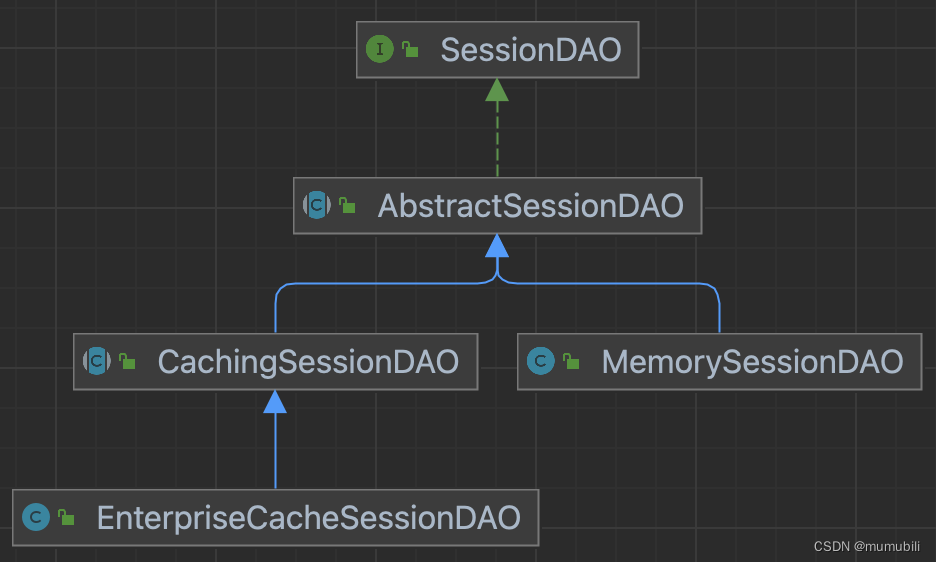
2. Session全局超时时间配置(默认超时时间为30min)
3. onStart将SessionId存储到Cookie中,如下:
private void storeSessionId(Serializable currentId, HttpServletRequest request, HttpServletResponse response) {if (currentId == null) {String msg = "sessionId cannot be null when persisting for subsequent requests.";throw new IllegalArgumentException(msg);}Cookie template = getSessionIdCookie();Cookie cookie = new SimpleCookie(template);String idString = currentId.toString();cookie.setValue(idString);cookie.saveTo(request, response);log.trace("Set session ID cookie for session with id {}", idString);}至此,用户登录认证过程完成了生成认证Token、通过Realm从应用中获取用户认证信息、用户认证Token匹配,以及认证成功后创建用户Subject对象、保存Subject到Session、SessionId保存到Cookie等操作。
相关文章:

Shiro框架:Shiro登录认证流程源码解析
目录 1.用户登录认证流程 1.1 生成认证Token 1.2 用户登录认证 1.2.1 SecurityManager login流程解析 1.2.1.1 authenticate方法进行登录认证 1.2.1.1.1 单Realm认证 1.2.1.2 认证通过后创建登录用户对象 1.2.1.2.1 复制SubjectContext 1.2.1.2.2 对subjectContext设…...
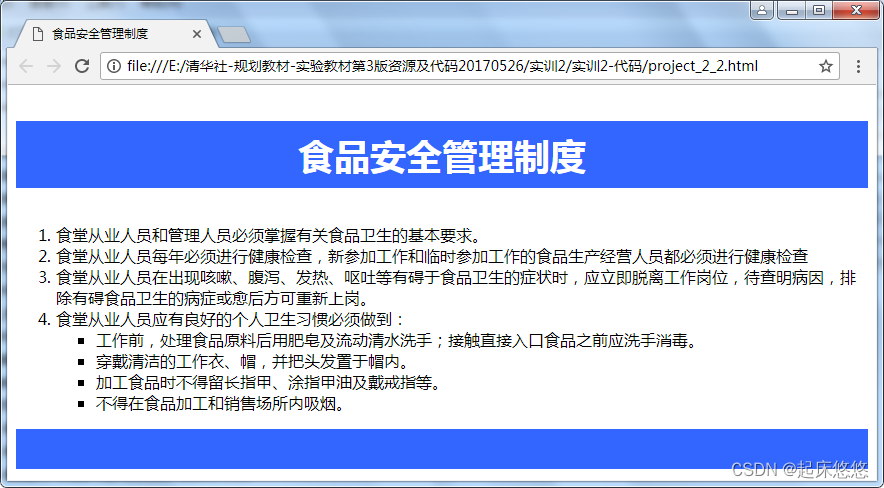
WEB前端人机交互导论实验-实训2格式化文本、段落与列表
1.项目1 文本与段落标记的应用: A.题目要求: B.思路: (1)首先,HTML文档的基本结构是通过<html>...</html>标签包围的,包含了头部信息和页面主体内容。 (2)在头部信息…...

Python:list列表与tuple元组的区别
在Python中,List(列表) 和Tuple(元组) 都是用于存储一组有序元素的数据结构,但它们有一些关键的区别,包括可变性、性能、语法等方面。 1. List(列表) 用法:…...

如何基于 Gin 封装出属于自己 Web 框架?
思路 在基于 Gin 封装出属于自己的 Web 框架前,你需要先了解 Gin 的基本用法和设计理念。 然后,你可以通过以下步骤来封装自己的 Web 框架: 封装路由:Gin 的路由是通过 HTTP 方法和 URL 路径进行匹配的,你可以根据自己…...
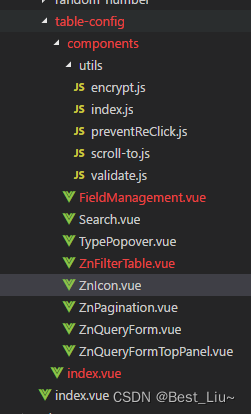
VUE element-ui实现表格动态展示、动态删减列、动态排序、动态搜索条件配置、表单组件化。
1、实现效果 1.1、文件目录 1.2、说明 1、本组件支持列表的表头自定义配置,checkbox实现 2、本组件支持列表列排序,vuedraggable是拖拽插件,上图中字段管理里的拖拽效果 ,需要的话请自行npm install 3、本组件支持查询条件动态…...

压测工具ab
Apache Benchmark(简称ab) 是Apache安装包中自带的压力测试工具 ,简单易用, Apache的ab命令模拟多线程并发请求,测试服务器负载压力,也可以适用于其他服务:nginx、lighthttp、tomcat、IIS等其它Web服务器的压力 采用平台…...

P4学习(一) 环境搭建
系列文章目录 第一章 P4学习入门之虚拟机环境搭建 文章目录 系列文章目录前言一、P4是什么?二、搭建步骤1.下载虚拟机镜像2.虚拟机管理软件载入镜像2.1 找到你镜像的所在位置2.2 打开VMware Workstation2.3 载入镜像 3.检验环境是否配置成功 P4 的真机环境搭建 前言…...

openssl3.2 - 官方demo学习 - server-arg.c
文章目录 openssl3.2 - 官方demo学习 - server-arg.c概述笔记备注END openssl3.2 - 官方demo学习 - server-arg.c 概述 TLS服务器, 等客户端来连接; 如果客户端断开了, 通过释放bio来释放客户端socket, 然后继续通过bio读来aceept. 笔记 对于开源工程, 不可能有作者那么熟悉…...

Windows RPC运行时漏洞事后总结
2022年4月前后,Windows RPC运行时被曝出存在远程代码执行漏洞,当时曾引起很多人广泛关注。微软很快做出反应,发布补丁程序进行修补。这次事件中,Windows远程过程调用(RPC)运行时共出现三个关键漏洞…...

运算电路(1)——加法器
一、引言 微处理器是由一片或少数几片大规模集成电路组成的中央处理器。这些电路执行控制部件和算术逻辑部件的功能。微处理器能完成取指令、执行指令,以及与外界存储器和逻辑部件交换信息等操作,是微型计算机的运算控制部分。它可与存储器和外围电路芯片…...
)
ESP32-WIFI(Arduino)
ESP32-WIFI Wi-Fi是一种基于IEEE 802.11标准的无线局域网技术,是Wi-Fi联盟制造商的商标作为产品的品牌认证。它可以让电脑、手机、平板电脑等设备通过无线信号连接到互联网 。 在无线网络中,AP(Access Point)和 STA(St…...

【网络虚拟化】网络设备常见冗余方式——堆叠、M-Lag、DRNI
网络设备常见冗余设计——堆叠、M-Lag、DRNI 提示:这里可以添加系列文章的所有文章的目录,目录需要自己手动添加 网络设备常见冗余设计——堆叠、M-Lag、DRNI 网络设备常见冗余设计——堆叠、M-Lag、DRNI前言一、网络设备虚拟化二、堆叠技术1.技术原理2.…...

arm的侏罗纪二 cache学习
个人觉得inner shareable和outer shareable;POU和POC 是难点,慢慢学习吧。 inner shareable是cluster内 outer shareable是cluster之间 参考文献: 深入学习Cache系列 1: 带着几个疑问,从Cache的应用场景学起 https://www.eet-c…...
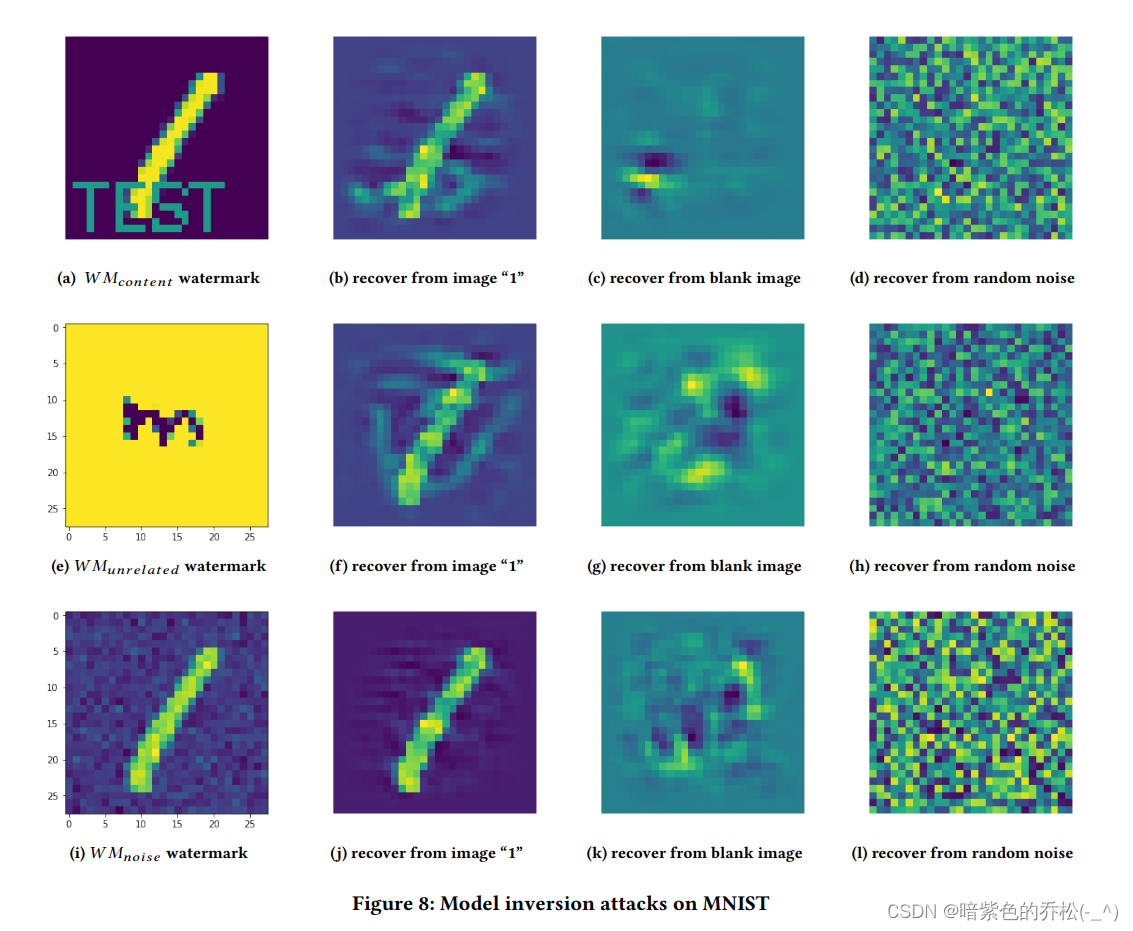
Protecting Intellectual Property of Deep NeuralNetworks with Watermarking
保护深度神经网络的知识产权与数字水印技术 ABSTRACT 深度学习是当今人工智能服务的关键组成部分,在视觉分析、语音识别、自然语言处理等多个任务方面表现出色,为人类提供了接近人类水平的能力。构建一个生产级别的深度学习模型是一项非常复杂的任务&a…...
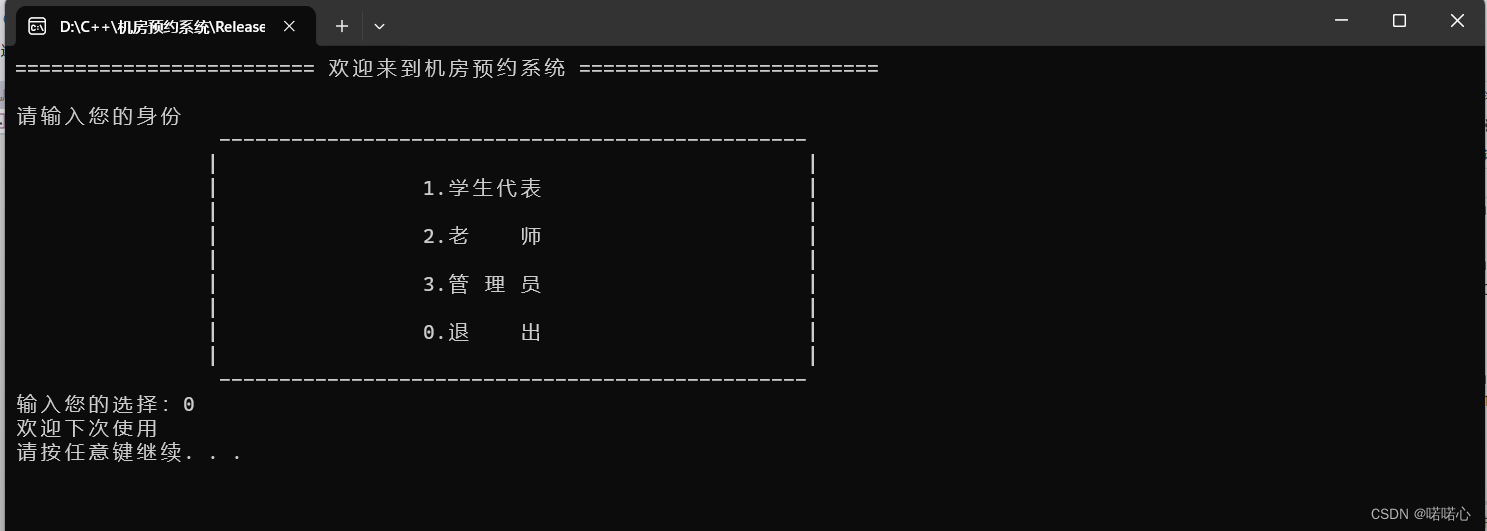
c++学习笔记-STL案例-机房预约系统1-准备工作
前言 准备工作包括:需求分析、项目创建、主菜单实现、退出功能实现 目录 1 机房预约系统需求 1.1 简单介绍 1.2 身份介绍 1.3 机房介绍 1.4 申请介绍 1.5 系统具体要求 1.6 预约系统-主界面思维导图 2 创建项目 2.1 创建项目 2.2 添加文件 编辑 3 创建…...

AnnData:单细胞和空间组学分析的数据基石
AnnData:单细胞和空间组学分析的数据基石 今天我们来系统学习一下单细胞分析的标准数据类型——AnnData! AnnData就是有注释的数据,全称是Annotated Data。 AnnData是为了矩阵类型数据设计的,也就是长得和表格一样的数据。比如…...

C语言中的 `string.h` 头文件包含的函数
C语言中的 string.h 头文件包含了许多与字符串或数字相关的函数。这些函数可以用于字符串的复制、连接、搜索、比较等操作。 常用字符串函数 函数名功能strlen()返回字符串的长度strcpy()将一个字符串复制到另一个字符串中strncpy()将最多 n 个字符从一个字符串复制到另一个字…...

kotlin的抽象类和抽象方法
在 Kotlin 中,抽象类和抽象方法是面向对象编程中的概念,用于实现抽象和多态性。抽象类无法实例化,这意味着我们无法创建抽象类的对象。与其他类不同,抽象类总是打开的,因此我们不需要使用open关键字。 抽象类ÿ…...
)
2022年面经记录(base杭州)
duandian科技(笔试未通过) 笔试题:leetCode热题第20题有效的括号 面后感:没怎么刷算法题,js 基础不扎实 laiweilai(三面未通过) 一面:笔试题 写一个函数,获取url中的指定…...

安装Docker图形管理界面portainer
安装Docker图形管理界面portainer 映射data文件夹根据自己环境更换 docker run -d --name portainer -p 9000:9000 -v /var/run/docker.sock:/var/run/docker.sock -v /yourpath/docker/portainer:/data --restartalways portainer/portainer-ce:latest好好享受吧!…...
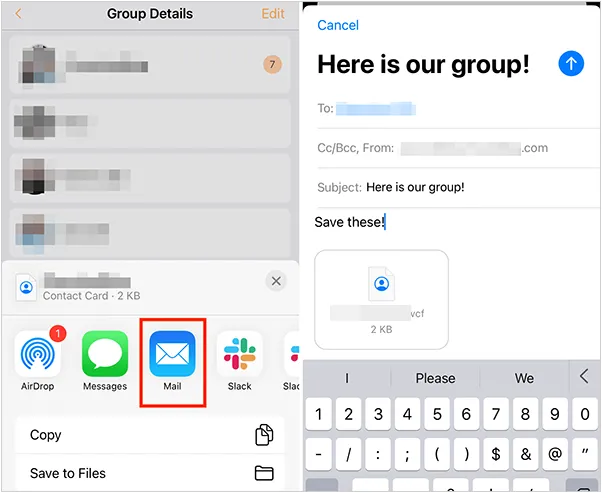
如何将联系人从 iPhone 转移到 Android
从 iPhone 换到 Android 手机时,你可能需要保留重要的数据,例如通讯录。好在,将通讯录从 iPhone 转移到 Android 手机非常简单,你可以从本文中学习 6 种可靠的方法,确保随时保持连接,不错过任何信息。 第 1…...

Java 加密常用的各种算法及其选择
在数字化时代,数据安全至关重要,Java 作为广泛应用的编程语言,提供了丰富的加密算法来保障数据的保密性、完整性和真实性。了解这些常用加密算法及其适用场景,有助于开发者在不同的业务需求中做出正确的选择。 一、对称加密算法…...

自然语言处理——循环神经网络
自然语言处理——循环神经网络 循环神经网络应用到基于机器学习的自然语言处理任务序列到类别同步的序列到序列模式异步的序列到序列模式 参数学习和长程依赖问题基于门控的循环神经网络门控循环单元(GRU)长短期记忆神经网络(LSTM)…...

html css js网页制作成品——HTML+CSS榴莲商城网页设计(4页)附源码
目录 一、👨🎓网站题目 二、✍️网站描述 三、📚网站介绍 四、🌐网站效果 五、🪓 代码实现 🧱HTML 六、🥇 如何让学习不再盲目 七、🎁更多干货 一、👨…...

比较数据迁移后MySQL数据库和OceanBase数据仓库中的表
设计一个MySQL数据库和OceanBase数据仓库的表数据比较的详细程序流程,两张表是相同的结构,都有整型主键id字段,需要每次从数据库分批取得2000条数据,用于比较,比较操作的同时可以再取2000条数据,等上一次比较完成之后,开始比较,直到比较完所有的数据。比较操作需要比较…...

Chromium 136 编译指南 Windows篇:depot_tools 配置与源码获取(二)
引言 工欲善其事,必先利其器。在完成了 Visual Studio 2022 和 Windows SDK 的安装后,我们即将接触到 Chromium 开发生态中最核心的工具——depot_tools。这个由 Google 精心打造的工具集,就像是连接开发者与 Chromium 庞大代码库的智能桥梁…...

git: early EOF
macOS报错: Initialized empty Git repository in /usr/local/Homebrew/Library/Taps/homebrew/homebrew-core/.git/ remote: Enumerating objects: 2691797, done. remote: Counting objects: 100% (1760/1760), done. remote: Compressing objects: 100% (636/636…...

Docker拉取MySQL后数据库连接失败的解决方案
在使用Docker部署MySQL时,拉取并启动容器后,有时可能会遇到数据库连接失败的问题。这种问题可能由多种原因导致,包括配置错误、网络设置问题、权限问题等。本文将分析可能的原因,并提供解决方案。 一、确认MySQL容器的运行状态 …...
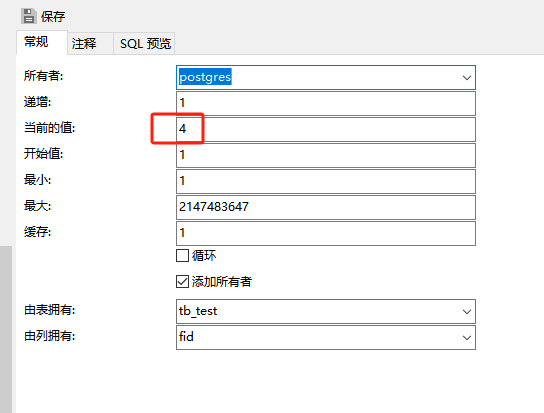
pgsql:还原数据库后出现重复序列导致“more than one owned sequence found“报错问题的解决
问题: pgsql数据库通过备份数据库文件进行还原时,如果表中有自增序列,还原后可能会出现重复的序列,此时若向表中插入新行时会出现“more than one owned sequence found”的报错提示。 点击菜单“其它”-》“序列”,…...

UE5 音效系统
一.音效管理 音乐一般都是WAV,创建一个背景音乐类SoudClass,一个音效类SoundClass。所有的音乐都分为这两个类。再创建一个总音乐类,将上述两个作为它的子类。 接着我们创建一个音乐混合类SoundMix,将上述三个类翻入其中,通过它管理每个音乐…...
